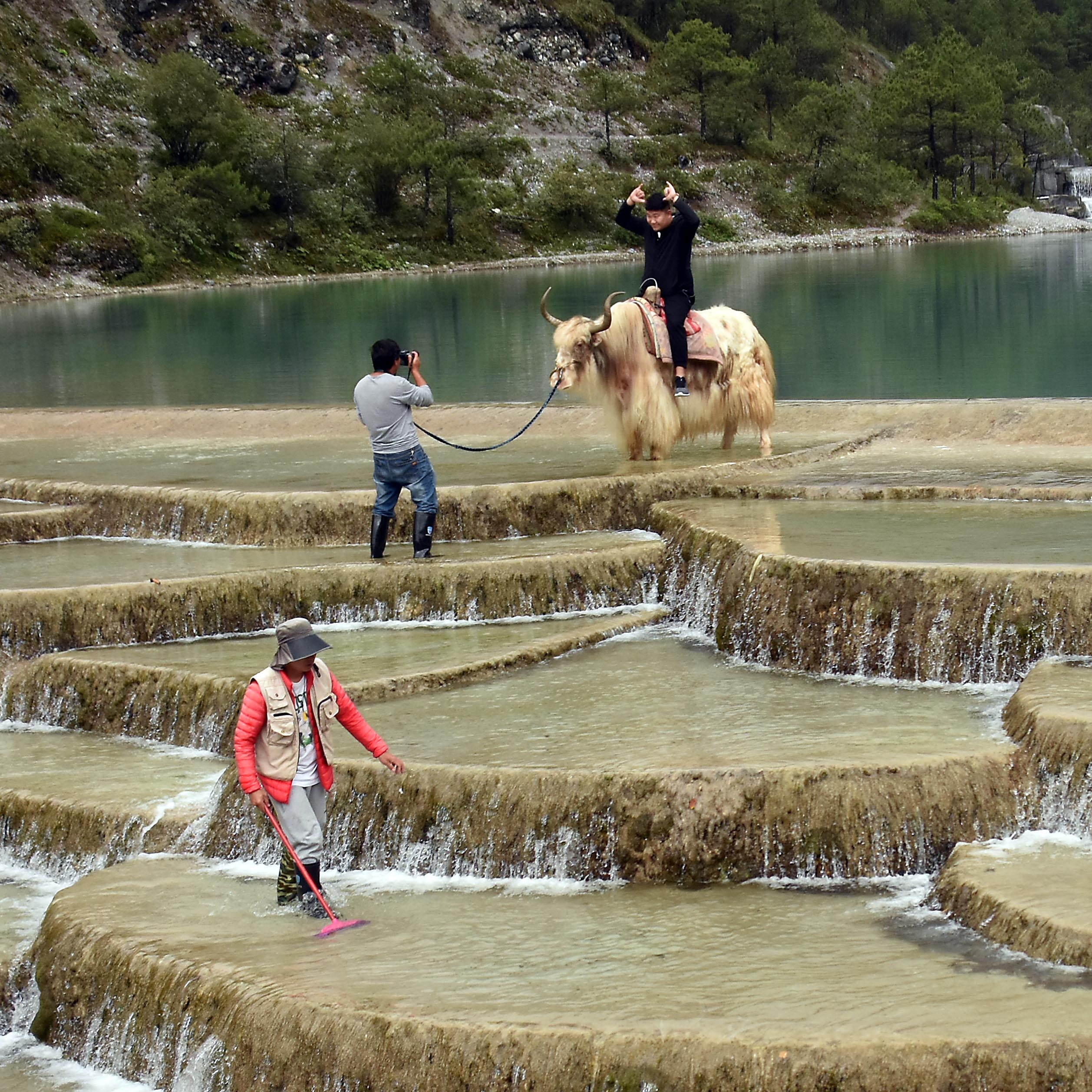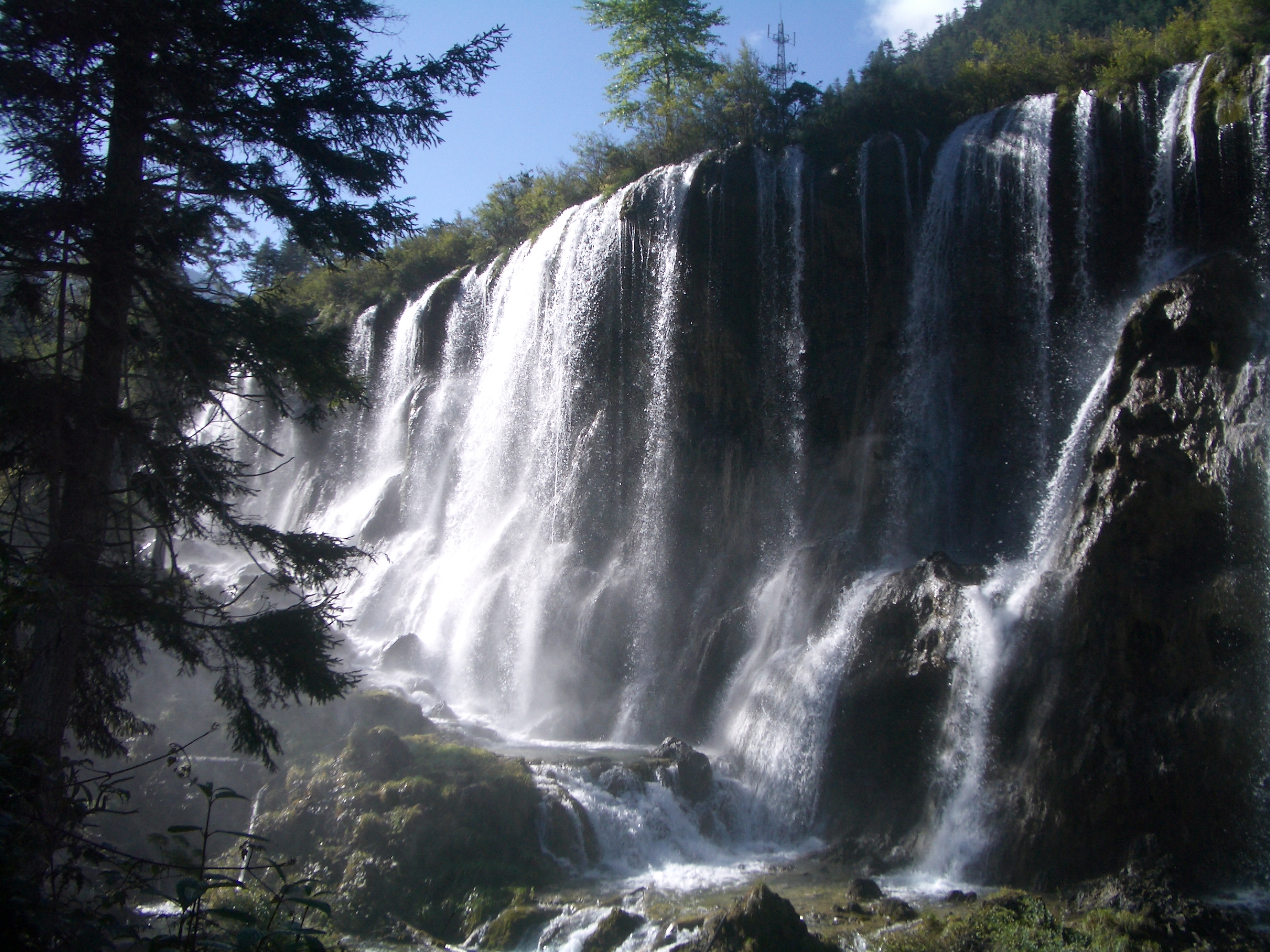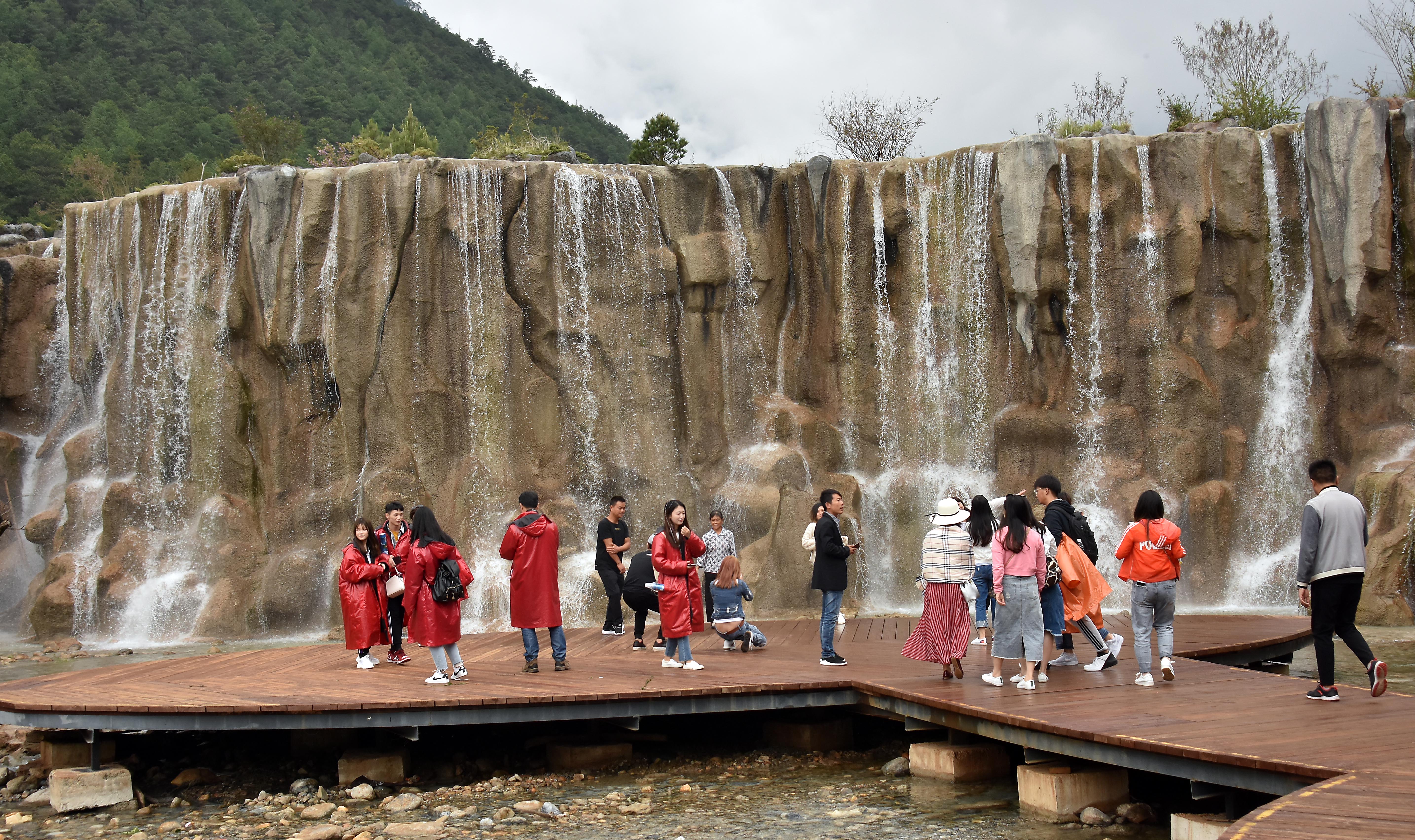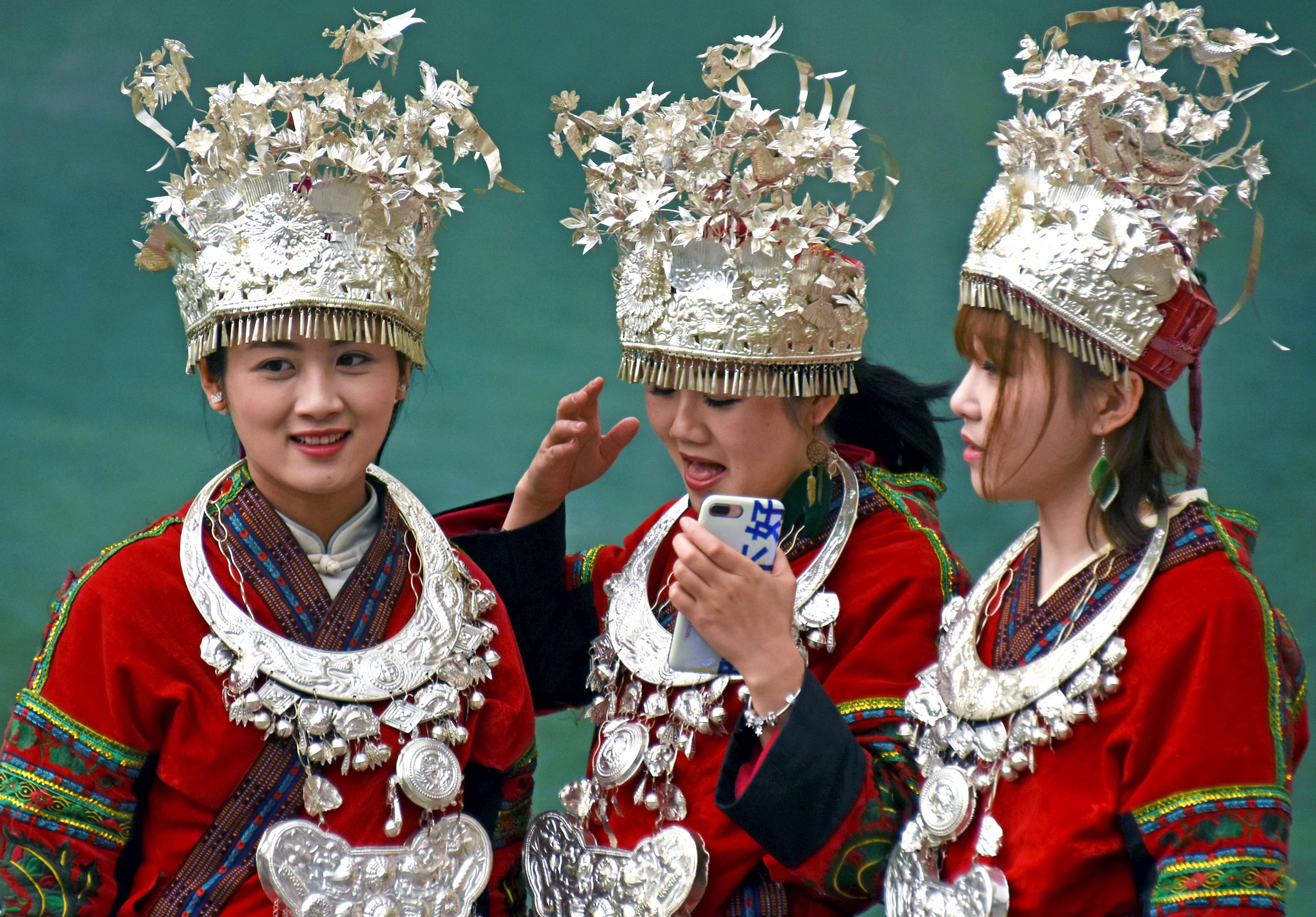Yulong Geopark modifies its natural landscape with fake stuff copied from other places in China. But it’s still beautiful.
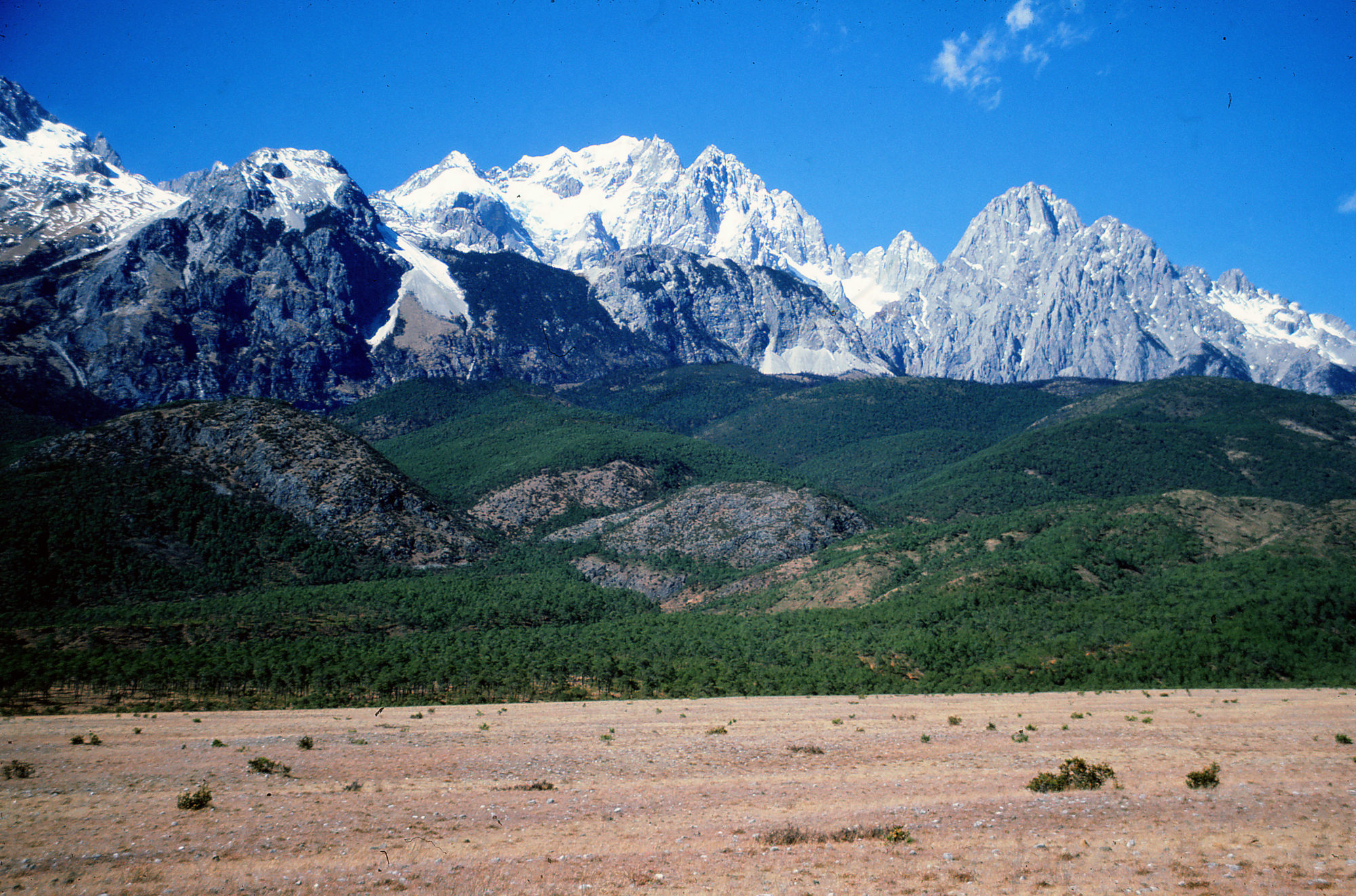
Once upon a time, meadows to the east of the Yulong Snow Mountain were called Ganhai 干海, which means the dry sea, probably because the limestone is so porous that low spots don’t hold much water, even in the rainy season.
Today Ganhai is still Ganhai, but on maps younger than 30 years, gan is written with a different character, pronounced the same, that means sweet or giving. Ganhai, the dry sea (干海) has become Ganhai, the sweet sea (甘海).
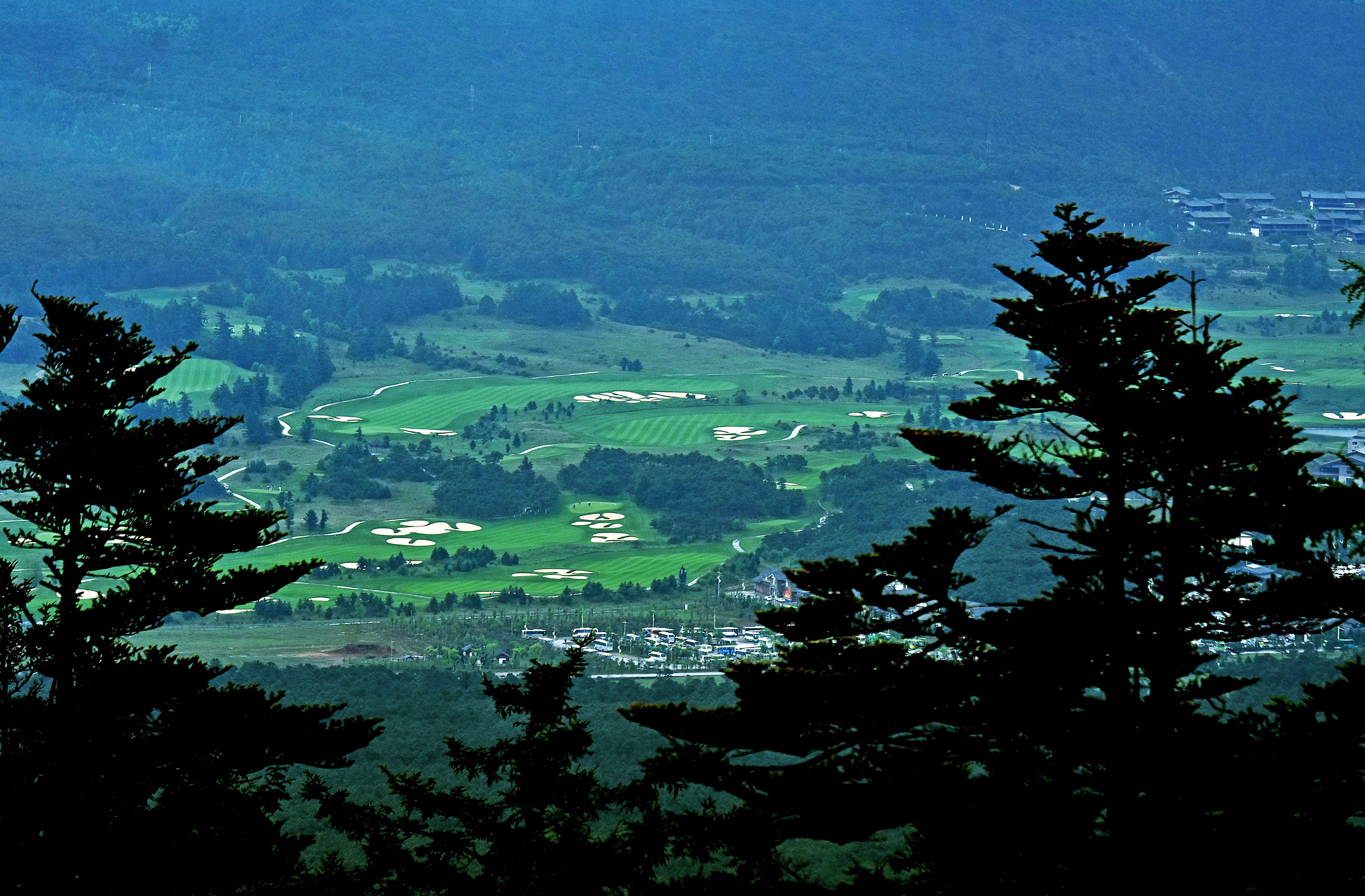 Here is the main tourist service center for Jade Dragon Geo-Park with golf course, villas, parking lot, shopping center and lots of other stuff.
Here is the main tourist service center for Jade Dragon Geo-Park with golf course, villas, parking lot, shopping center and lots of other stuff.
Yulong Xueshan, or Jade Dragon Snow Mountain, in the Tibetan borderlands of Yunnan Province, China is a sublime massif of limestone and ice that frames one of the world’s deepest river valleys. Because the topography in this frontier between China and Indo-Burma is so isolating, cultures have developed with their own written language and vernacular sense of place. In the early 20th Century an American explorer named Joseph Rock described the region in a series of National Geographic articles. Then with Communist Liberation in 1949, everything was closed to outsiders. Foreign visitors returned in the 1980s and since the end of the 20th Century, the Jade Dragon Snow Mountain National Geopark has received many, many millions of domestic tourists who have come into the area on day excursions from the nearby city of Lijiang.
Some of the day-trippers are surely drawn by the scenery and the bracing mountain air, others come because their friends have, or through circumstances beyond their control, perhaps a corporate incentive program. They move among the high elevation wonders on green buses, walk paths or boardwalks holding canned oxygen, queue for cable car excursions, and shop.
Jade Dragon Geopark may be one of the most popular scenic sites in Yunnan, but there is a national park in Sichuan Province called Jiuzhaigou that is even more famous. Perhaps because they evoke a traditional garden, the waterfalls, limestone shoals and stunningly clear pools of Jiuzhaigou have become icons of natural beauty in China.
Back around the turn of the century, Jade Dragon’s Baishui stream stated getting adorned with artificial landscape features that mimic those of Jiuzhaigou. It’s not ugly, but it can be jarring as hell in a ‘geopark’ where landscape authenticity is a real, tangible thing that ought to be defended.
Here are some comparative photos from Jiuzhaigou and Jade Dragon Geopark. Some of the Jiuzhaigou images are from when Craig Kirkpatrick and I visited as guests of the Sichuan Ministry of Urban and Rural Environmental Protection in 1986 and don’t show the development and the mass tourism that have come in since Jiuzhaigou got famous in the 1990s. Having said that, I do believe Jiuzhaigou has done a fine job managing the crowds. There are no cable cars and no fake landscapes.
First some scenes of the Shuzhen Village part of Jiuzhaigou from 32 years ago, along with a 2015 Google Earth image for context. It was very cold at the time, and the whole place was almost deserted. Simple boardwalks traversed the stream, and the locals maintained water-powered prayer wheels. Nothing had been paved yet.
Here at Shuzhen, the river is interrupted by shoals of calcium carbonate limestone that have precipitated to make dams with waterfalls. It is in the nature of these kinds of carbonate landscapes to self-organize their architecture so that water flows evenly over a the crest of the entire shoal, all the way across from left to right. Shrubs grow where they can, anchored in the fresh limestone, roots nourished by the passing river water.
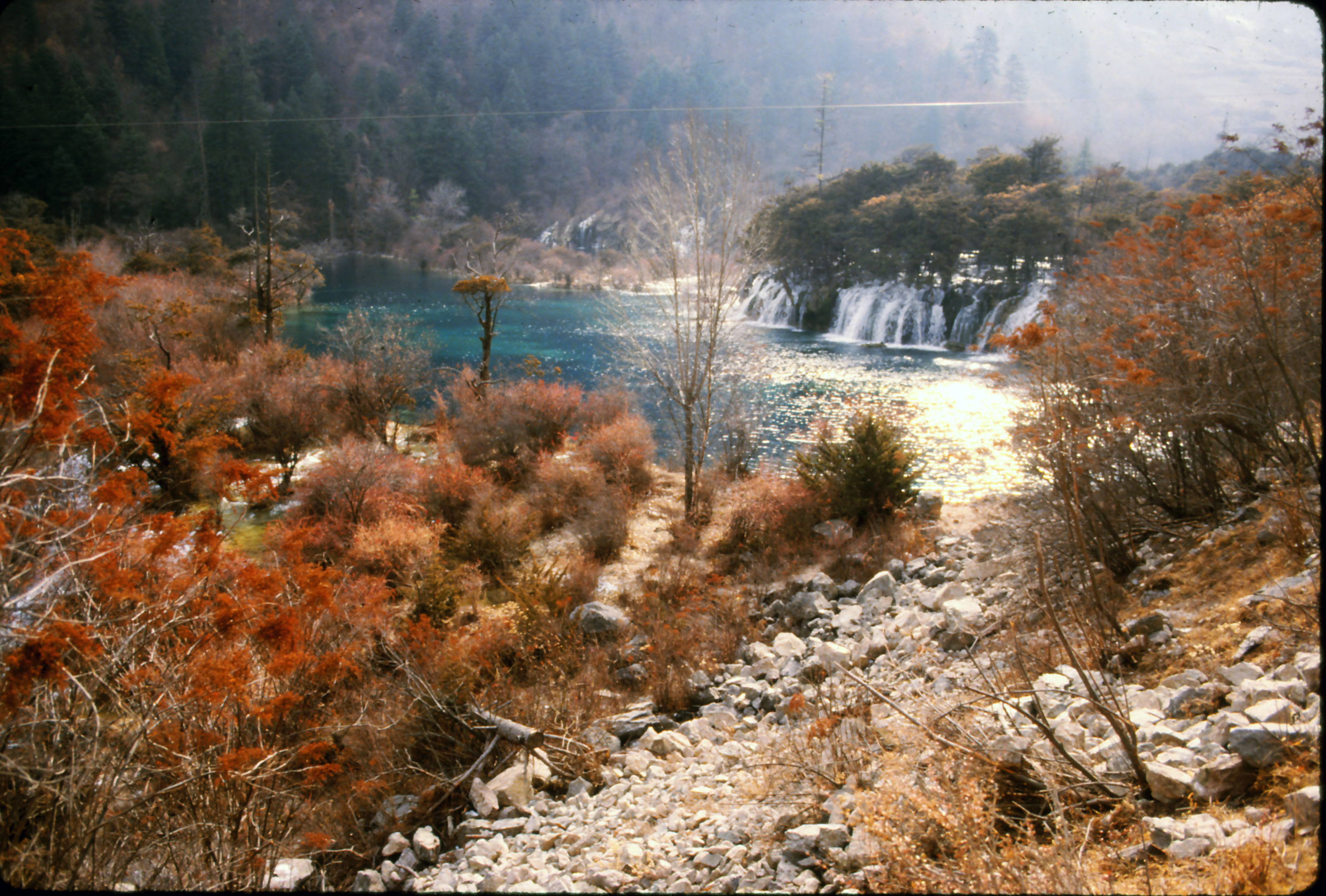
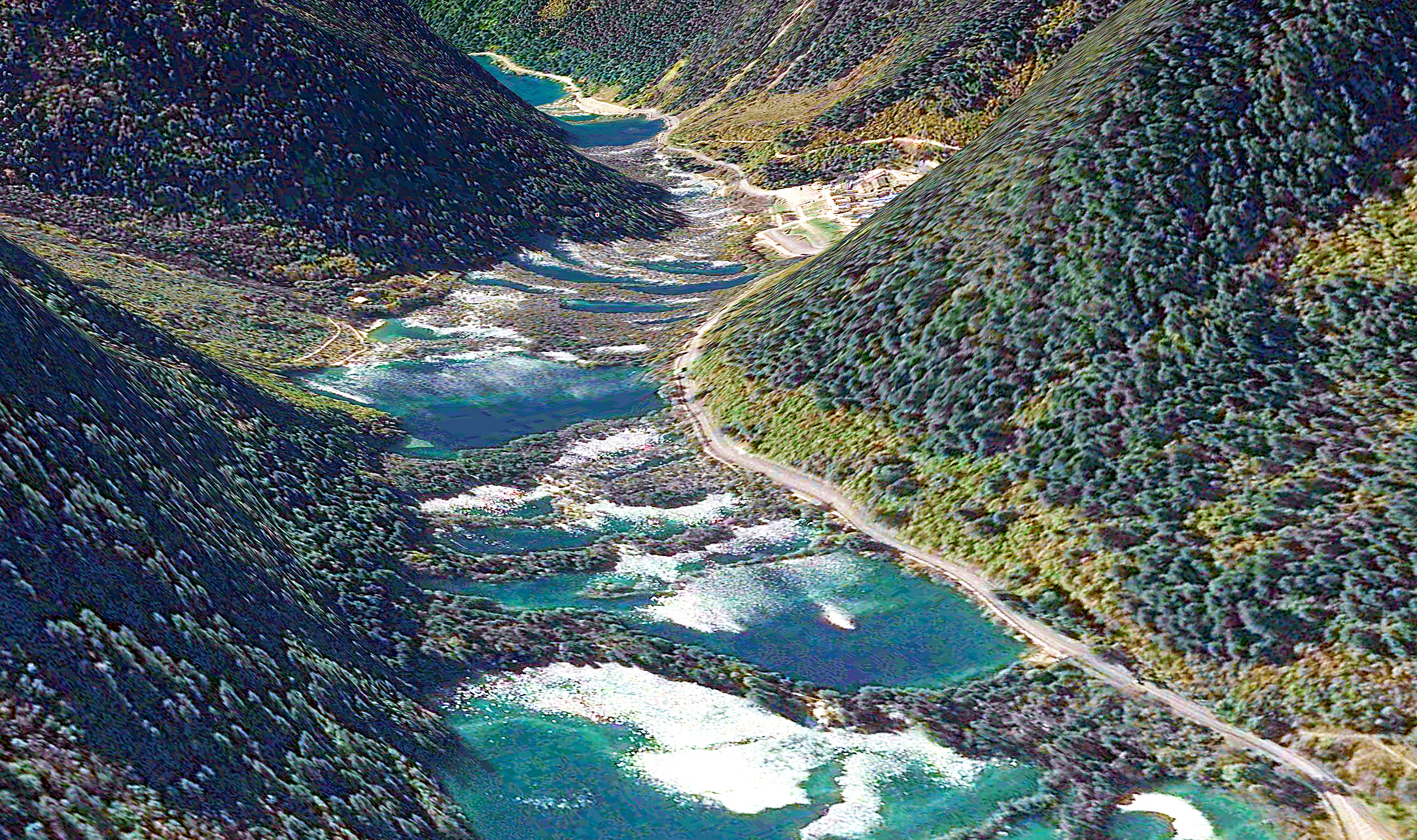
So, at some point about 20 years ago, someone in the loop at Jade Dragon Geo-Park down in Yunnan decided one of their streams should get fake landscape features that look like the depositional carbonates of Jiuzhaigou.
Baishui stream, the one targeted for the upgrades, is now dammed in five places, and various dams mimic different specific scenic features of Jiuzhaigou.
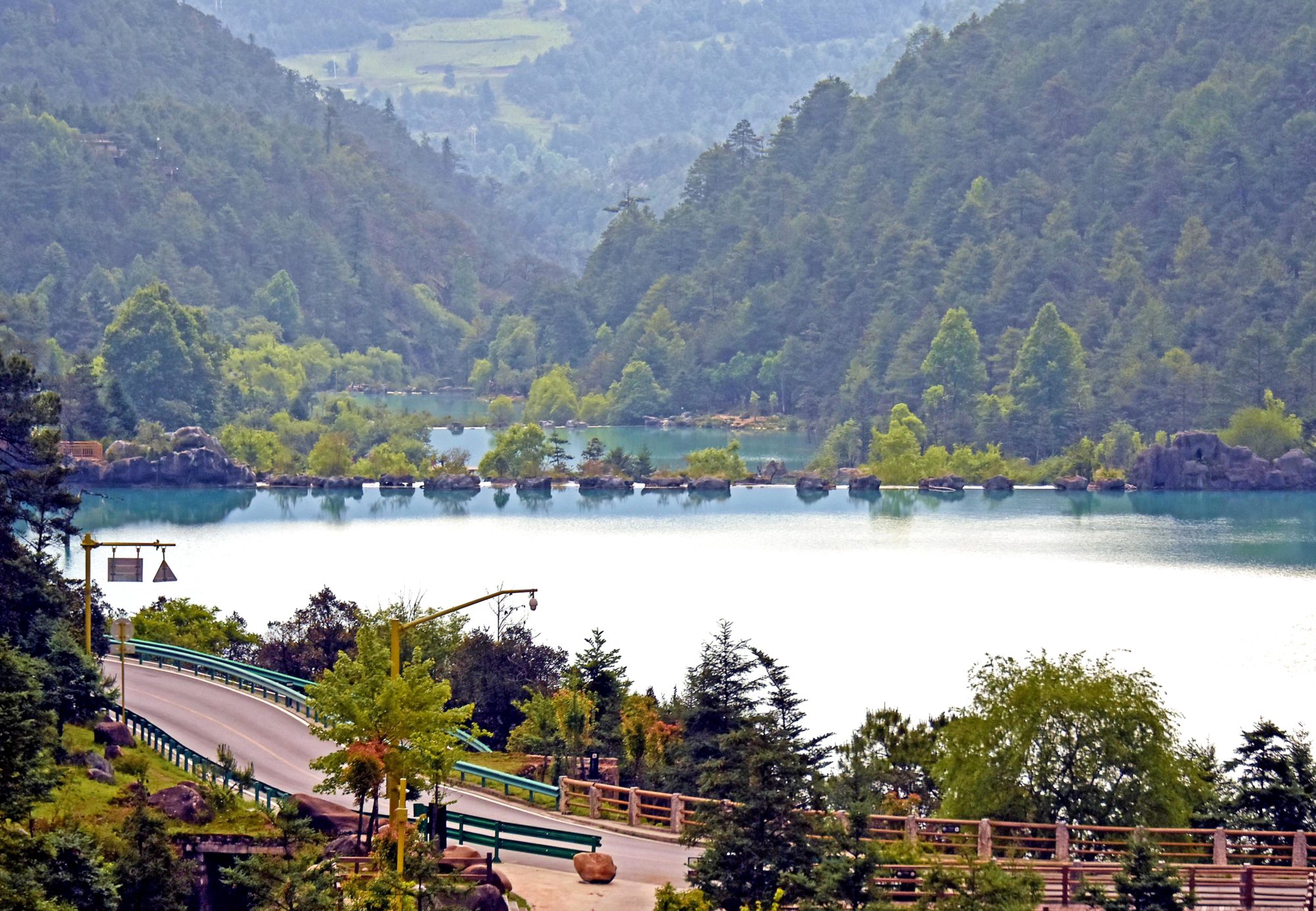
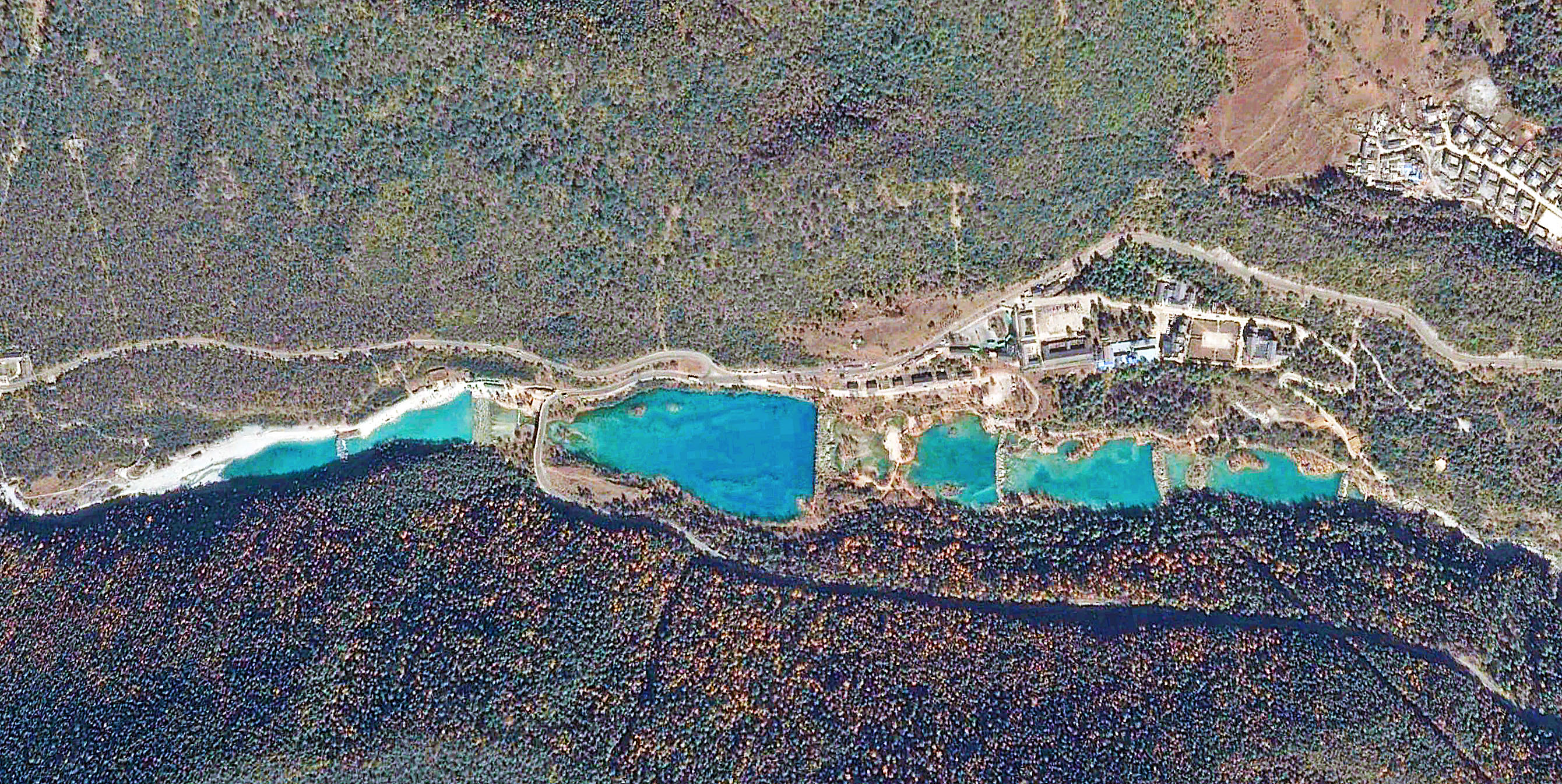
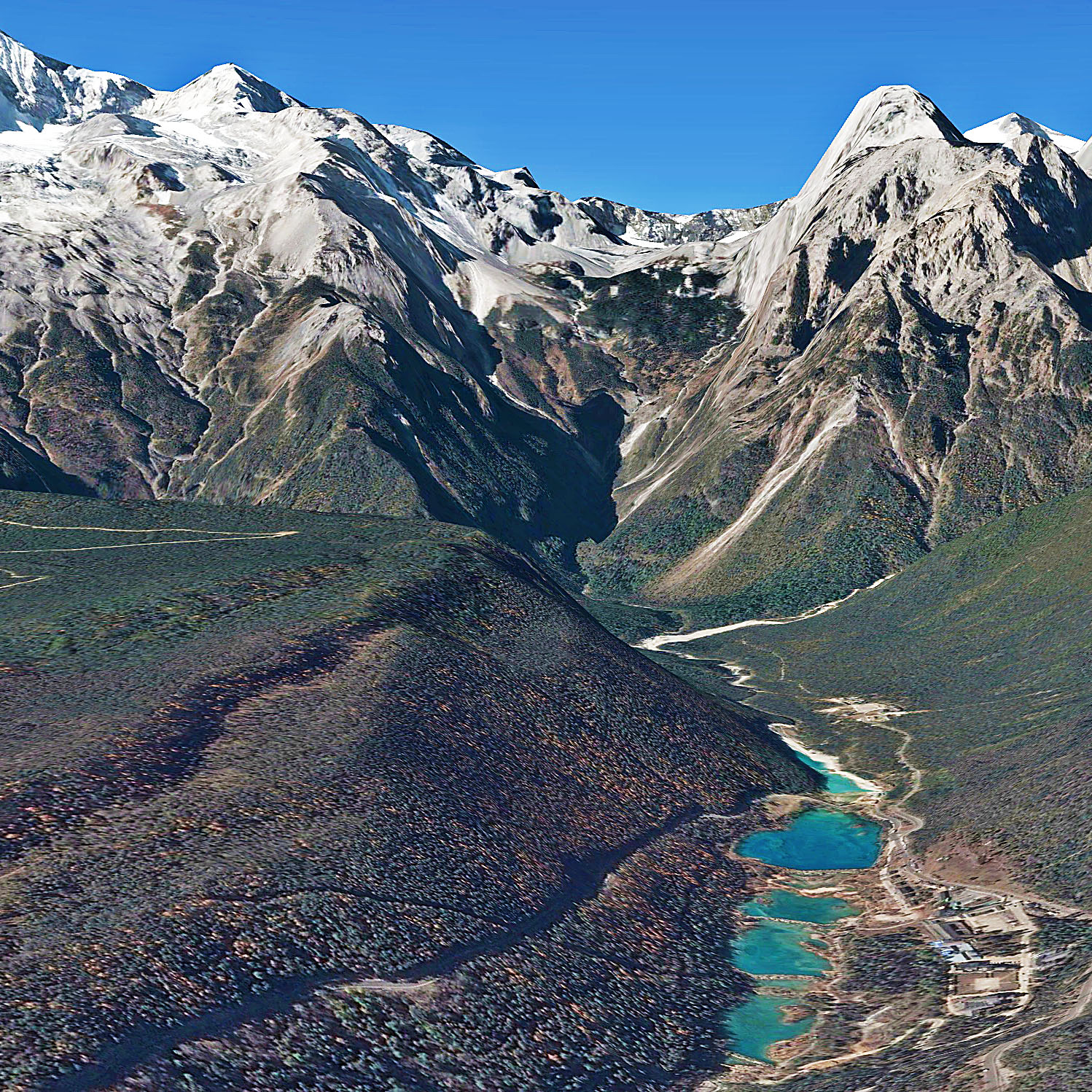
Here is Nuorilang, one of Jiuzhaigou’s biggest carbonate waterfalls, photographed in early winter 1986 and late summer 2006.
Two views of Nuorilang Waterfall, a depositional feature at Jiuzhaigou National Park. The first is from December 1986, prior to development of the scenic site. The second is from September 2006. Dead timber has been removed from the scene. Perhaps the tree trunks in the 1986 image are from logging operations that have been curtailed.

And here is the copy at Jade Dragon Geopark, June 2018
The fake Nuorilang waterfall, built into one of the check dams at Baishui stream in Jade Dragon Geo-Park, Yunnan. Here the water is distributed along the breadth of the falls through careful engineering. Over time, perhaps the water will incise a few larger channels.Here is a depositional shoal at Jiuzhaigou, winter 1986.

And here’s Jade Dragon’s copy in June 2018.
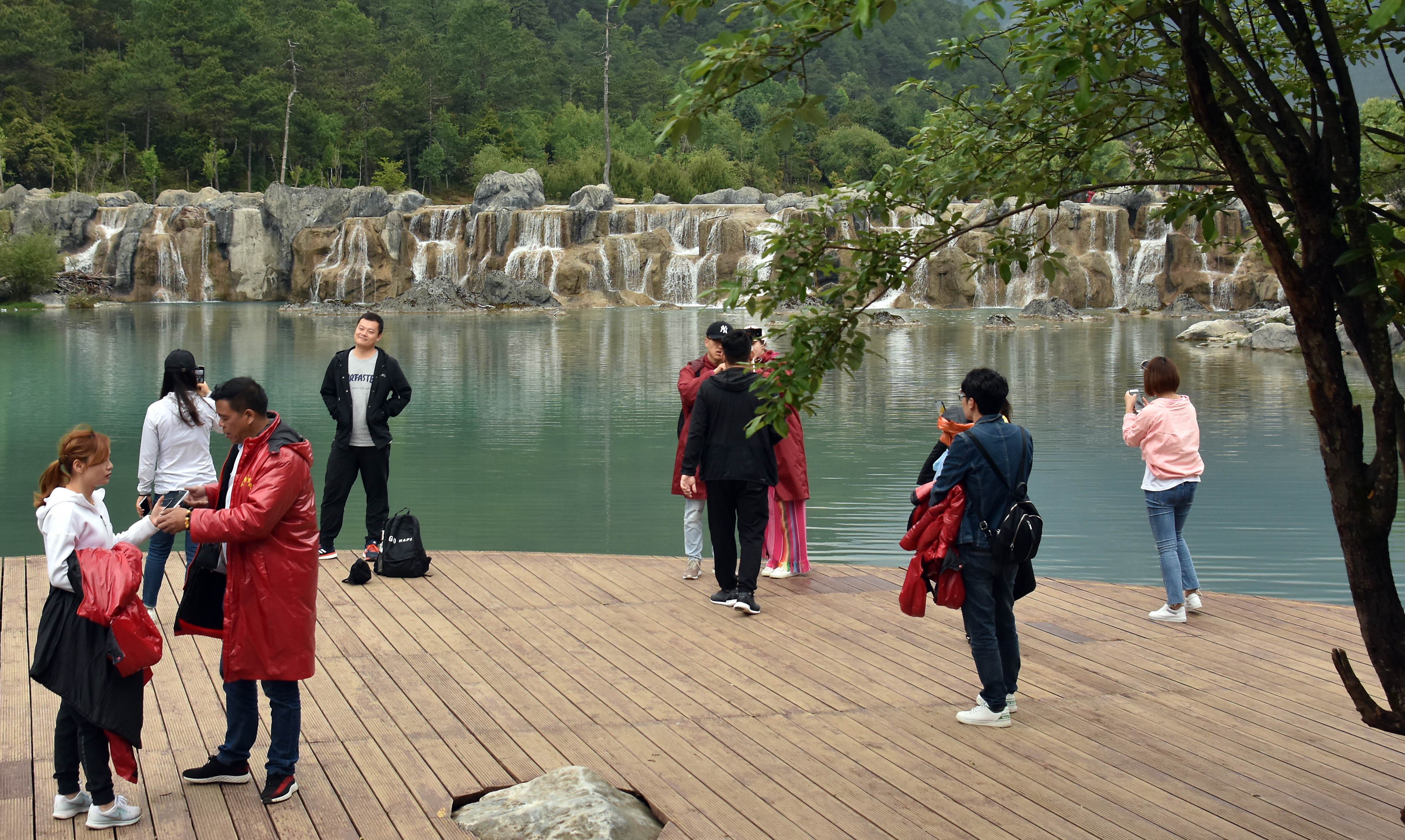
Bathtub terraces are a depositional limestone formation that has grown in various places throughout the mountains of southwest China. This image shows a set of them at Baishui Tai in the Haba Mountains of Northern Yunnan (not to be confused with the Baishui host stream at Jade Dragon Geopark). But there are bigger bathtub terraces at Huanglong, next door to Jiuzhagou. It’s uncertain which specific formation inspired the concrete terraces at at Jade Dragon, shown in the bottom photo.
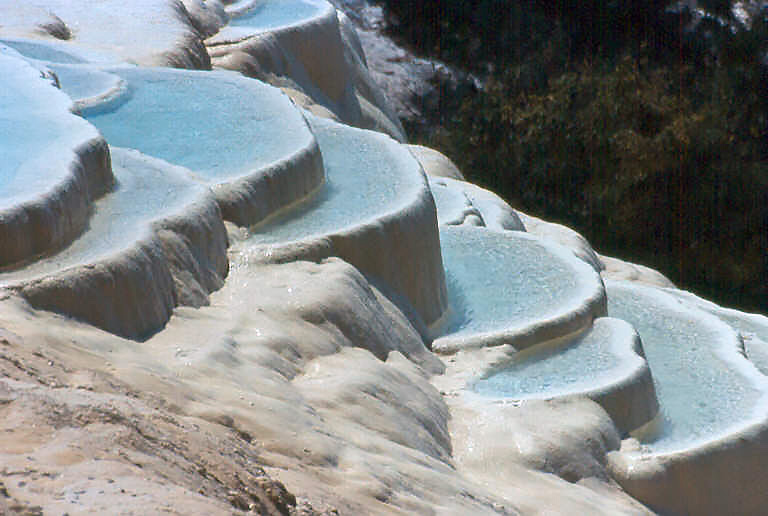
This is a man-made check dam built from concrete that mimics natural bathtub terraces like the ones above.
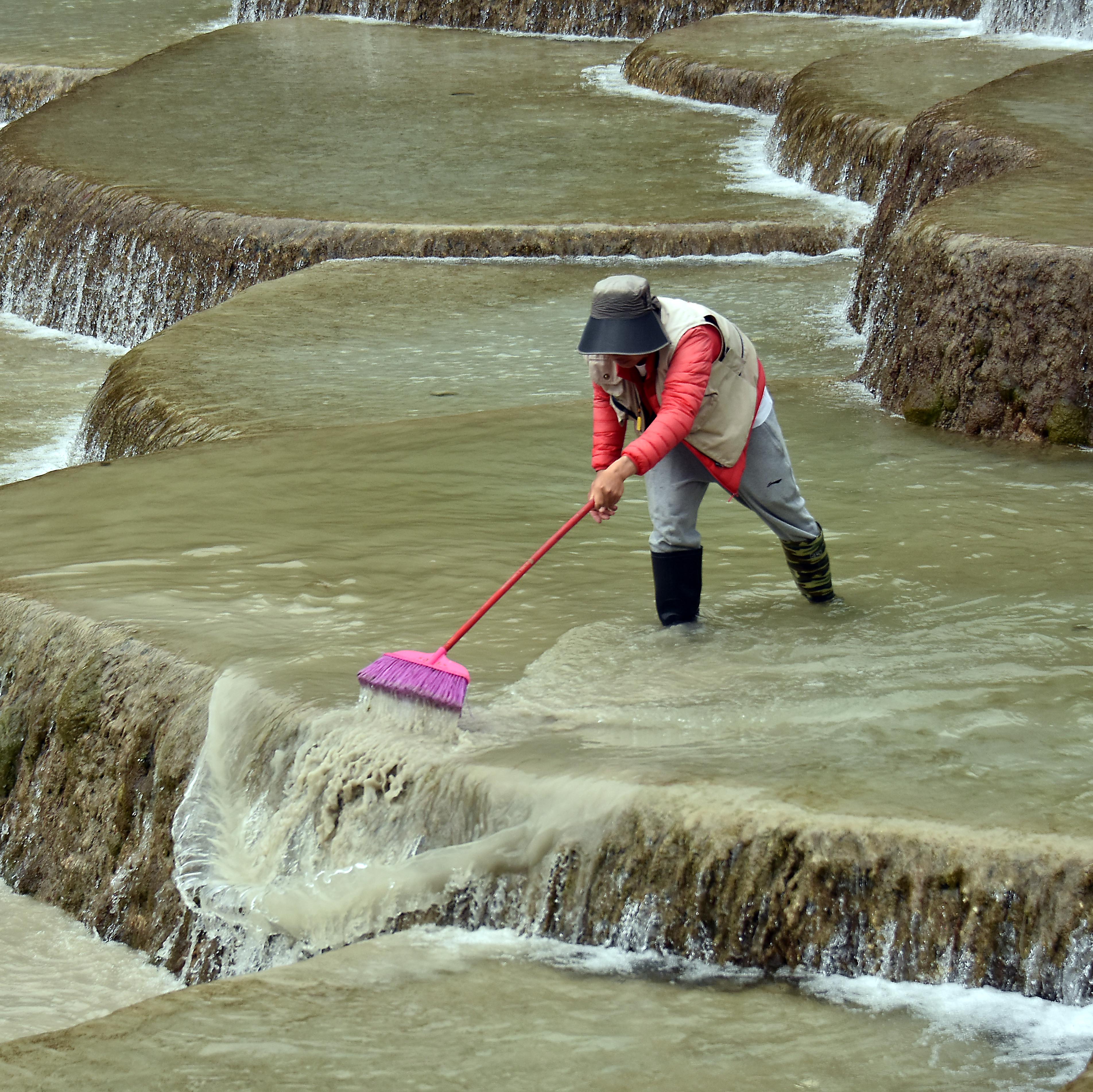
Depositional carbonate is not the only thing that gets appropriated at the Jade Dragon Geo-Park. Visitors pay to dress in generic ethnic minority clothing and accessories. These tourists’ hats and ceremonial necklaces are inspired by Miao silver from other parts of southwest China. The provenance of the jackets is less certain.
